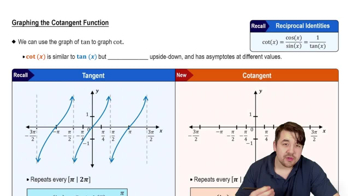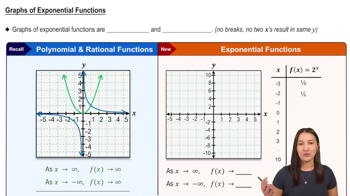Table of contents
- 0. Functions7h 52m
- Introduction to Functions16m
- Piecewise Functions10m
- Properties of Functions9m
- Common Functions1h 8m
- Transformations5m
- Combining Functions27m
- Exponent rules32m
- Exponential Functions28m
- Logarithmic Functions24m
- Properties of Logarithms34m
- Exponential & Logarithmic Equations35m
- Introduction to Trigonometric Functions38m
- Graphs of Trigonometric Functions44m
- Trigonometric Identities47m
- Inverse Trigonometric Functions48m
- 1. Limits and Continuity2h 2m
- 2. Intro to Derivatives1h 33m
- 3. Techniques of Differentiation3h 18m
- 4. Applications of Derivatives2h 38m
- 5. Graphical Applications of Derivatives6h 2m
- 6. Derivatives of Inverse, Exponential, & Logarithmic Functions2h 37m
- 7. Antiderivatives & Indefinite Integrals1h 26m
- 8. Definite Integrals4h 44m
- 9. Graphical Applications of Integrals2h 27m
- 10. Physics Applications of Integrals 2h 22m
1. Limits and Continuity
Finding Limits Algebraically
Problem 2.5.51c
Textbook Question
Complete the following steps for the given functions.
c. Graph and all of its asymptotes with a graphing utility. Then sketch a graph of the function by hand, correcting any errors appearing in the computer-generated graph.
 Verified step by step guidance
Verified step by step guidance1
Step 1: Identify the vertical asymptote by setting the denominator equal to zero and solving for x. For the function \( f(x) = \frac{x^2 - 3}{x + 6} \), set \( x + 6 = 0 \) to find the vertical asymptote at \( x = -6 \).
Step 2: Determine the horizontal asymptote by comparing the degrees of the numerator and the denominator. Since the degree of the numerator (2) is greater than the degree of the denominator (1), there is no horizontal asymptote. Instead, there is an oblique (slant) asymptote.
Step 3: Find the oblique asymptote by performing polynomial long division of \( x^2 - 3 \) by \( x + 6 \). The quotient will give the equation of the oblique asymptote.
Step 4: Plot the function using a graphing utility to visualize the curve and its asymptotes. Pay attention to the behavior of the graph near the asymptotes.
Step 5: Sketch the graph by hand, ensuring to correct any discrepancies from the computer-generated graph, especially near the asymptotes and intercepts. Note the behavior of the function as it approaches the asymptotes.
 Verified video answer for a similar problem:
Verified video answer for a similar problem:This video solution was recommended by our tutors as helpful for the problem above
Video duration:
14mPlay a video:
Was this helpful?
Key Concepts
Here are the essential concepts you must grasp in order to answer the question correctly.
Asymptotes
Asymptotes are lines that a graph approaches but never touches. They can be vertical, horizontal, or oblique. Vertical asymptotes occur where a function approaches infinity, typically at points where the denominator is zero. Horizontal asymptotes indicate the behavior of a function as x approaches infinity or negative infinity, showing the function's end behavior.
Recommended video:

Introduction to Cotangent Graph
Graphing Rational Functions
Graphing rational functions involves plotting the function, which is a ratio of two polynomials. Key steps include identifying intercepts, asymptotes, and the overall shape of the graph. Understanding the behavior near asymptotes and the end behavior of the function is crucial for accurate representation. A graphing utility can assist in visualizing these features, but manual sketching helps correct any inaccuracies.
Recommended video:

Graph of Sine and Cosine Function
End Behavior of Functions
The end behavior of a function describes how the function behaves as the input values approach positive or negative infinity. For rational functions, this behavior is influenced by the degrees of the numerator and denominator polynomials. Analyzing the leading coefficients and degrees helps predict whether the function will approach a finite value, infinity, or negative infinity, which is essential for sketching accurate graphs.
Recommended video:

Graphs of Exponential Functions

 5:21m
5:21mWatch next
Master Finding Limits by Direct Substitution with a bite sized video explanation from Callie
Start learningRelated Videos
Related Practice







